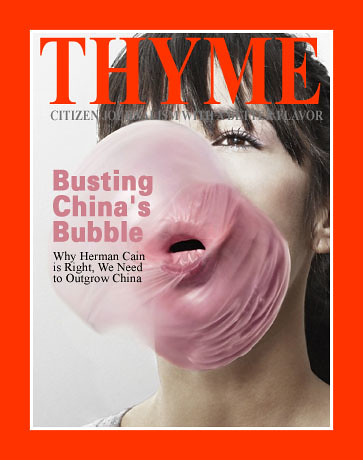
Volume VI, Issue VIII
China Conundrum Confounds Capitalists
A 'Best of THYMEs' Feature...
It is time for America to come to terms with China. No sooner than we reported on the dissapearance of Liu Xia [1.], the 'other' weekly news magazine is reporting on China's bubble. We need to, as Herman Cain says: "outgrow China." Surely the world benefits from a robust economy in China, but we dare not neglect the dangers of turning over to her the role of world superpower. China is a land of many complex and contradictory realities. Persecution of people of faith and creative individuals is a dark problem wherever it occurs and China has long been known to suppress. In 1989 tanks rolled over peaceful demonstrators in Bejing's Tianamen Square. That event marked a dark time for freedom loving people in China.
Asian Megacities as Political Theatre

What Le Corbusier would have wrought in Paris has become the new reality of Bejing and Shanghai.
Le Corbusier once wrote of his Plan Voisin for Paris: “Since 1922 [for the past 42 years] I have continued to work, in general and in detail, on the problem of Paris. Everything has been made public. The City Council has never contacted me. It calls me ‘Barbarian’!” -- Le Corbusier’s writings, p. 207.
Fast forward to the Twenty-first Century and Shanghai [Le Corbusier on steroids]. It all seems like the realization of the fictional Coruscant from Star Wars... a completely urban environment that stretches as far as the eye can see. The entire planet of Coruscant is one continual city.
Guy Sorman discusses the rise of Asian 'Super Megagopolises' [click to read] in City Journal. Looking at the Mega-model of Shanghai, one could begin to wonder: "can Coruscant be that far off." Sorman points out, however, that Shanghai is largely a political creation...designed to create the impression that China is ready for business with the world. [1.]
Every day the city teems with life and every night the workers necessary to make it function vacate the pristine city. It is like Disney World, where the 'cast members' descend into 'Utilidor,' remove their costumes, and disappear to homes elsewhere.
For Shanhai workers, 'homes elsewhere' often means crowded andsubstandard. Just as China's factories are seldom seen by Westerners,those who maintain the stage for world commerce live in a vastlydifferent world than the one they 'portray' in their 'day jobs.'
Or perhaps, the Death Star in Star Wars is a better analogy. Its scale is way beyond human. It is intended to convey a sense of awe. Might we be looking at the work of some latter day Nimrod, seeking to elevate himself to the heavens?
Sorman points out how the mad rush into the 21st Century has obliterated the traditional spaces of Shanghai and Bejing, which were much more human in size and scate. Again Star Wars comes to mind. Green beautiful planets like Naboo and Alderon risk elimination as the Empire expands its grasp.
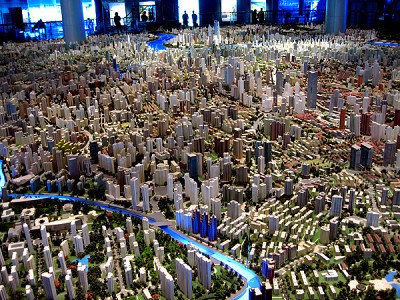
This scale model of Shanghai dwarfs the people in the room...

...and calls to mind the fictional city of Coruscant.
In the 'Sixties America sought to 'remake' her major cities. Le Corbusier style housing blocks were constructed to elevate the urban poor. Many of these 'projects' have since been torn down. While we were building them Moscow was building similar blocks of apartments. Today in Moscow, urban youths flock to the rooftops. [2.] Called 'Roofers,' these young people seek the rooftops simply for the openness and the view.
How to Return to the Village
Returning Government to the People in the 'Audience'
Nineteenth Century America was a nation of villages. Great centers of commerce existed, but they were fed by a vibrant countryside. When Thomas Jefferson created his ideal 'Academic Village' to house the University of Virginia he purposefully left one side open to the surrounding agricultural land. From the steps of the Rotunda one could look upon the rolling hills of Albemarle County.
Architect Stanford White convinced the University to fill the void with Old Cabell Hall a long time ago. The recently completed South Lawn attempts to recreate a space leading off into the trees of Charlottesville. The challenge of getting back to the garden is ever before us.
Rooftop Gardens [click to read] offer one method of getting people and open spaces together. Reclaiming existing environments is another. Aging strip malls could be recycled into village centers for the surrounding suburban homes, offering a place residents could walk or bicycle to. Vacant lots and neglected riverfronts can become parks and gardens.
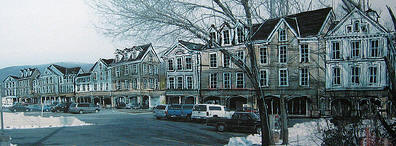
Proposed Renewal of the Crozet Shopping Center.
Suburb bashing has always been a fashionable intellectual pastime.That is one reason I like Robert A. M. Stern. He sees the reasons people seek out single family dwellings of a traditional form. I have a friend who lives on the upper West side and his penthouse with a view of the Hudson is very nice but give me my gardens.People put up with the wretched infrastructure overload and strip centers because the village is still appealing. The residential areas become landscaped oasis for their residents. Kids play outside the house in view of the kitchen window. People visit at the back fence.Moreover the suburbs are seen by their dwellers as affirming opportunity and safety. If people had no emotion for their homes they would be fine with Le Courbusier type high rises but that is simply not the case.The problem is really one of infrastructure and public space [or lack therof]. Strip malls and box stores create a sterile wasteland but they may become the village centers of the future.
Time magazine once featured a piece called 'Repurposing Suburbs' which shows some fine examples of recreating this type of public space. This Crozet project turns a tired strip mall into a village center. One cannot wait for Crozet's redesigner to get his creative hands on some of the new "Town Center" projects which are now just collections of big box stores. Some time ago I drew a concept where the CSX tracks between Staunton and Charlottesville became a light rail line connecting Staunton, Fishersville, Waynesboro, Crozet, Ivy, The University of Virginia Medical Center and Downtown Charlottesville. The result would be a series of village centers and a better utilization of existing infrastructure.
City Journal's writers draw conflicting conclusions. Houston is touted as encouraging its middle class while Gotham offers limited options. Dense urban areas do tend to create energy efficiency. The trick is to see opportunities to improve the communities we have already created.That would certainly involve offering condominiums and a pedestrian friendly center to suburban communities and reclaiming all those wonderful old low density neighborhoods of our cities.
There is more to solving this problem than finding architectural solutions. Redemption too, must begin on a human scale. In a future post I will explore the role of 'New Monasticism' and activists like Star Parker in this aspect of redemptive work in our culture.
Next: Counterpoint to Coruscant [click to read].
Our Future Should be Built on Our Past Success
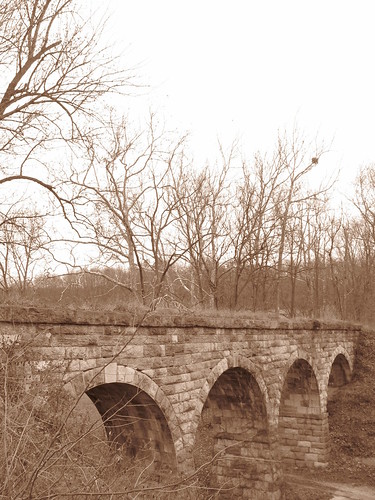
The Valley Railroad was once a branch of the B&O that ran all the way to Rockbridge County.
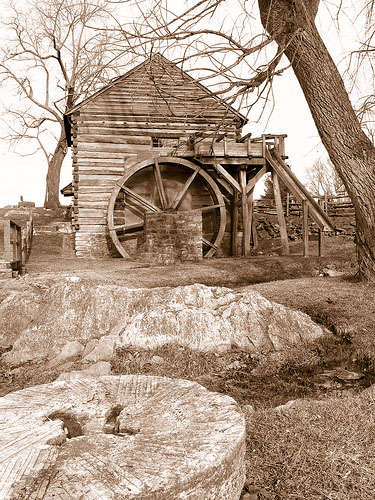
Agriculture was revolutionized by Cyrus McCormick, who built his first reaper at his Father's mill in Augusta County. The operation moved to Chicago to become the International Harvester Corporation.Fishersille Mike shares this piece: Hard Choices All Around [click to read]. The bottom line is that it is time to start making things again. He references This Article by William Gross [click to read].
"The global economy is suffering from a lack of aggregate demand. With insufficient demand, nations compete furiously for their share of the diminishing growth pie.
In the U.S. and Euroland, many policies only temporarily bolster consumption while failing to address the fundamental problem of developed economies: Job growth is moving inexorably to developing economies because they are more competitive.
Unless developed economies learn to compete the old-fashioned way – by making more goods and making them better – the smart money will continue to move offshore to Asia, Brazil and their developing economy counterparts, both in asset and in currency space."Drive past the once flourishing DuPont plant in Waynesboro and this will soon start to sink in. Once this complex employed thousands. Today a few hundred workers make Lycra. To qoute Billy Joel: "We're all in Allentown now."
Well we’re living here in Allentown
And they’re closing all the factories down
Out in Bethlehem they’re killing time
Filling out forms
Standing in line
Well our fathers fought the Second World War
Spent their weekends on the Jersey Shore
Met our mothers at the USO
Asked them to dance
Danced with them slow
And we're living here in Allentown.
But the restlessness was handed down
And it's getting very hard to stay.
Well we're waiting here in Allentown
For the Pennsylvania we never found
For the promises our teachers gave
If we worked hard
If we behaved.
So the graduations hang on the wall
But they never really helped us at all
No they never taught us what was real
Iron or coke,
Chromium steel.
– Billy Joel, 1982But 'living in Allentown' is not an option. The decline of the American economy cannot support our large urbanized population.
"The constructive way is to stop making paper and start making things. Replace subprimes, and yes, Treasury bonds with American cars, steel, iPads, airplanes, corn – whatever the world wants that we can make better and/or cheaper. Learn how to compete again. Investments in infrastructure and 21st century education and research, as opposed to 20th century education are mandatory, as is a withdrawal from resource-draining foreign wars. It will be a tough way back, but it can be done with sacrifice and appropriate public policies that encourage innovation, education and national reconstruction, as opposed to Wall Street finance and Main Street consumption."Some of the developments that make American plants less competitive are not bad. American mills in the Nineteenth Century employed children, often in dangerous environments. A system that has made life better for the workers is not a bad thing. High corporate tax rates, unsustainable pension plans and redundant Federal oversight that discourages production are very bad things.
We needn't reclaim all manufacturing. We need to find opportunities to excell as new technologies develop and master their development. New processes and craftmanship should fill our vacant plants and find market share enriching customers around the world.
Producing our own energy is essential. Increased nuclear capacity must be developed along with our own oil, gas and coal resources. Controlling energy costs is essential to our future productivity.
Localized production, small and home businesses and artisan farms are part of the answer too. Less centalization of such things as food production is good and renders us less susceptable to worldwide economic chaos.
The 1904 Saint Louis World's Fair and American Superiority
This Article by Guy Sorman in City Journal caught my eye. In 1904 the robust American economy was recognized as a world leader, but Sorman quotes a study showing the American economy coming into its own by 1820! He goes on to point out how egalitarian American ideals actually created the first mass market. Joseph Schumpeter's “creative destruction” is also mentioned as a reason for economic prosperity as the new constantly replaces the old and the market reallocates resources accordingly.
That translates into new innovative technology and methods. Eventually we'll be driving hydrogen cars and seeing advances in healthcare delivery. Government mandates won't accomplish this, changing economies, innovation and market demand will.
I once did a reconstruction of the Nineteenth Century town of Ellicott's Mills, first terminus of the Baltimore and Ohio Railroad outside of Baltimore. The Ellicott Brothers had migrated from Bucks County, Pennsylvania and settled on the banks of the Patapsco River. There they convinced Charles Carroll [the signer of the Declaration of Independence] to diversify his plantation agriculture. They intruduced wheat, flour mills, limestone mining and many other innovations and that is a model of what happened throughout the young Republic.
Our real cultural diversity as a 'Nation of Nations' fuels discovery and innovation. In spite of the professed loathing of so many world rulers for our Nation, the best and brightest still want to come here.
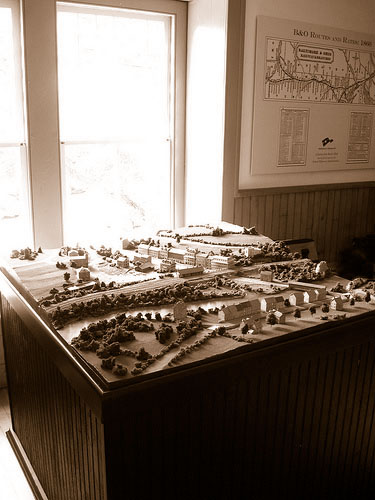
Ellicott's Mills is typical of many American communities in the Nineteenth Century. Model by Mr. Kirchman.Sorman points out that the U.S. economy and its spirit of enterprise still set the pace for the rest of the world. We must not invoke change that diminishes that.
The First Terminus of the B&O Railroad
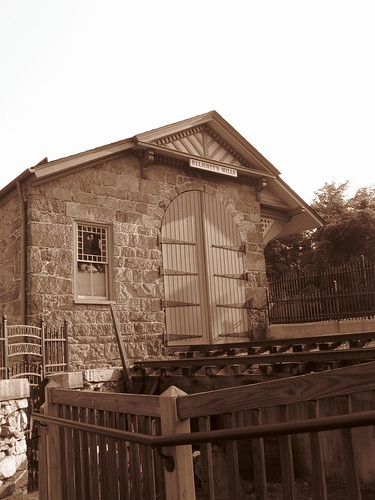
B&O Station.
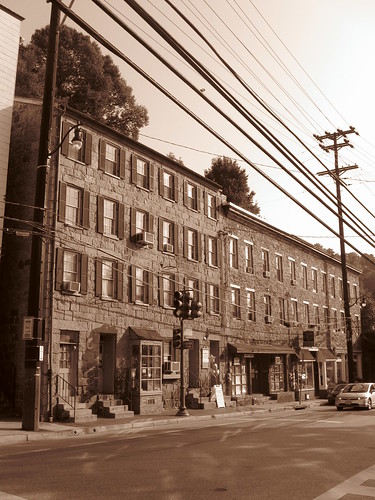
Patapsco Hotel.
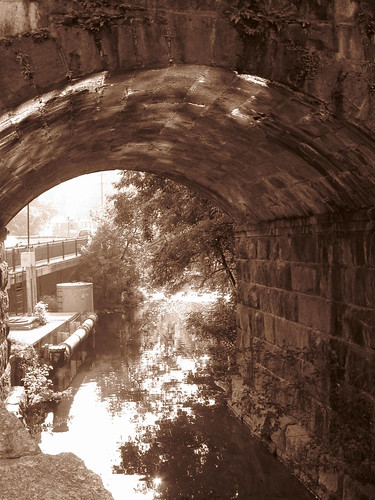
Arch of the old railroad bridge.
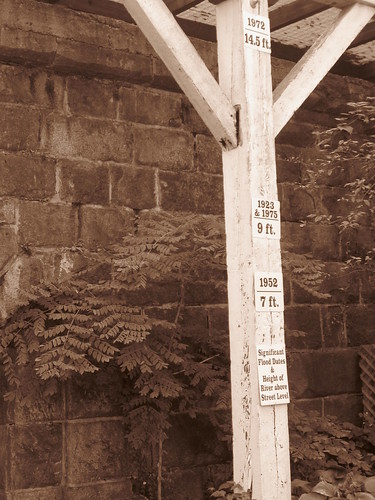
Floods of the Twentieth Century.
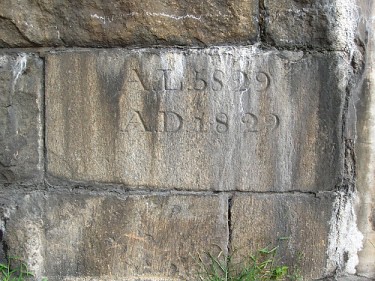
Cornerstone of the railroad bridge...
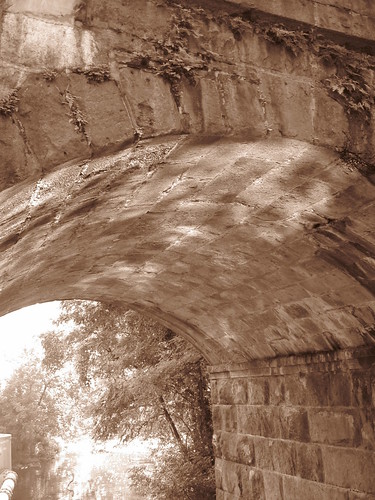
...still carrying Chessie System trains today.




No comments:
Post a Comment